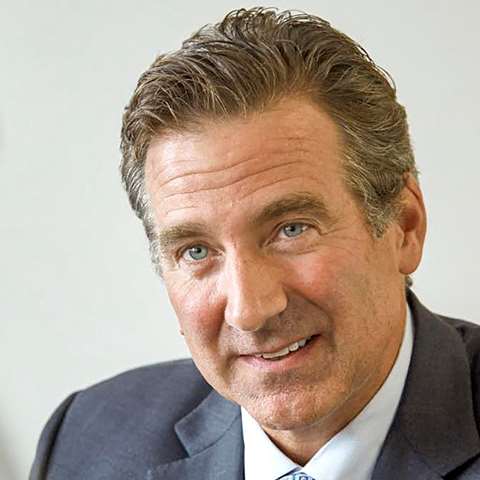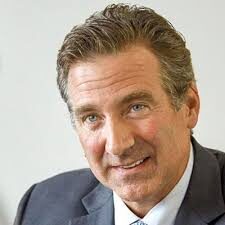Editor’s Note: On a recent webinar hosted by Chief Executive Group, AlixPartners’ Fred Crawford answered questions from the audience about scenario planning, taking action in a crisis and finding opportunities in the Covid crisis and what follows.

“What the best companies are already doing are laying groundwork for the transition to this ‘yellow light’ environment along three stages: adjust, balance, and convert,” says Crawford. Here’s more from the session:
Every day we see firms paddle furiously to keep their heads above water amid these crisis conditions; and their respective leadership teams are rightfully concerned about safeguarding their day-to-day business. However, we would caution them to think about the right balancing act between what they need to do today to stabilize the business, and what they need to do to ensure that in the future state they have a business that ultimately can outgrow the market. What may make sense to preserve cash in the heat of this crisis, may cut off growth options down the road.
We have seen organizations globally react with stunning speed towards managing potential down-side scenarios, one global consumer packaged goods company reduced its SKUs by over 50% while accelerating production on its key lines by 20% within the span of a few weeks – a transformation that would have taken months if not years normally, accomplished in days. Most companies have established crisis working groups or war rooms to monitor immediate changes & their firms’ responses; while others have taken the extra step in establishing future planning teams to feed the leadership team multiple scenario analyses from two weeks to two years out in time horizon. Again, these are necessary and responsible actions to preserve & prepare for the next stage in these crisis conditions – hopefully moving from “red light” to “yellow light”.
What the best companies are already doing are laying groundwork for the transition to this “yellow light” environment along three stages: adjust, balance, and convert.
First, organizations will have to adjust their products & services to what the “new normal” will look like as we emerge – what will exactly create value for customers? Perhaps those much-hyped yet much-delayed digital transformations take on an even greater level of importance as customers get conditioned to more and more virtual transactions and show reluctance to rush back into storefronts.
Next, the executive team will have to balance out key priorities as their firms rush to grab market share – as an example, the COO might want to streamline customer service processes & reduce costs while the CHRO looks to increase virtual learning and remote working productivity; the need for coordination and alignment is enormous. It will be imperative for the leadership team to craft a compelling narrative to show the case for change to the organization, develop a series of investments that they see will position them well for sustainable future growth, and weave a roadmap to lay out the sequences needed to get them there.
Lastly, firms will be looking to convert capabilities that they believe will be needed post-crisis. What are future demands going to look like? How will existing trends in their lines of business adapt or become obsolete? What is the new normal for our industry? All of these questions are ones that leadership teams will be asking and leveraging future planning teams to analyze, as they strain to see how their customer value propositions, ways of getting work done, and organizational capabilities might change. Conversions might take place among their workforce, their product or service lines, their branding, their operating models, really anywhere – it’s up to leadership teams (often alongside counsel like AlixPartners) to make the decisions that matter most for their immediate and long-term future.
Crisis conditions act as a forcing function for leadership teams, narrowing their focus until it becomes laser-like in managing the day-to-day; even if they have strong balance sheets. This is natural of course – the ultimate defensive action for any enterprise is cash management and it’s only right that responsible leaders are overtly focused on that overarching priority in order to keep the lights on. However, there are opportunities for these leadership teams to balance out the necessary defensive actions they are taking to navigate through this crisis with “offensive” actions to pre-position their firms for growth opportunities.
Let’s start with a concept from the U.S. Army, where large unit staffs have two teams: CUOPs (Current Operations) and FUOPs (Future Operations). CUOPs in our context would be the crisis management team that is staffing the war room and putting out the immediate fires. These are the individuals who are providing a steady stream of timely information for the executive team to make immediate decisions.
The FUOPs team for a firm would be a separate, cross-functional team composed of individuals from corporate strategy, finance, HR, IT, supply chain, and other functional areas that are charged with collecting forward-looking intelligence, developing a multitude of scenarios, and identifying the options and actions needed to act both tactically & strategically.
Unlike our traditional strategy teams, the FUOPs team will likely have to plan across multiple time horizons (stretching from days to years to the “next normal”) to stay on top of escalating issues & decisions that executive teams will have to make amid crisis. An important note around this hypothetical FUOPs or “plan-ahead” team – this is a group that needs to have a dedicated senior executive leading and held accountable for these high-potential individuals fenced off and reporting directly to the executive team.
To be candid, I leave this question to the money managers, of which I am definitely not one! I have been perplexed by the behavior of the market since covid hit. And, while I personally expect it to be a long, tough slog on the other side of this, I am unable to understand what the impact of $3+ trillion dollars injected into the U.S. economy by the FED, and collective trillions by Central Banks in other parts of the World, will be. To date, the market has been looking past the short-term pain of this crisis and has rallied off of the March lows. Where it goes from here is anyone’s guess, and therefore I suspect that multiples on earnings will be a distorted measure to judge future valuations until covid is well into our rear-view mirror.
Of course, we want to be able to capitalize on openings for our firms to grow, that’s almost universally in the best interests of our stakeholders – but you make an interesting point about not wanting to appear “predatory”. Public sensitivity to companies that might be viewed as taking “advantage” of other firms’ troubles during this period of economic weakness is likely at an all-time high.
I would counsel firms to have a “humane” approach when considering opportunities for growth. What I mean by the humane approach is that I think the most successful leaders to emerge from this crisis will be the ones that focus on their employees & customers; maybe even the employees of a competitor.
Take this example: Sandler O’Neill was a boutique investment bank located in the South Tower of the World Trade Center on September 11th, 2001. In the space of a few hours, 40% of the firm’s employees, including two out of the three managing partners were killed– and the surviving executive; a guy named Jimmy Dunne, had to pick up the pieces and see to the survival of their business. He made the determination that his people, both deceased & alive, were the most important thing to focus his energy on – attending every funeral he could, continuing health benefits for their families, working to keep everyone on payroll as long as possible.
Jimmy knew that his people were the firm, not their deal pipeline or their file cabinets or data room – and their larger network saw this humane approach and wanted to give back: competitors gave them free office space to operate out of, even brought them into deals so they could continue to stay afloat. And Sandler O’Neill not only survived but continued to grow post-9/11, eventually getting acquired last year by Piper Jaffray to become Piper Sandler Companies. What Jimmy Dunne found was that by doubling down on his people, that the rest of the business would take care of itself.
The humane approach in a time like this goes beyond the immediate goodwill that your firm generates for itself, it becomes a defining cultural artifact that lives on for years if not generations – that this company cares about its people and its customers.
We can’t predict the future, so the best that we can do is tackle the immediate with the best information we have on hand while doing our utmost to prepare our stakeholders for an uncertain future.
We know that current conditions are rough, no doubt about it. Likely there will be a contraction of some severity & duration, but I’ll leave that up to the economists to predict those characteristics. Unfortunately, the “best” response for an organization is really “it depends”, because each organization will navigate the current and future uncertainty based on their own uncertainty – whether it’s carrying on with operations or alternatively pursuing more dramatic restructurings of their business models & cost bases.
We see organizations bracing for the future by setting up “future plans teams” that are working on staggered time horizons (this week, next 2-4 weeks, 1-2 quarters, 1-2 years, and the “next normal”) and across 4-5 arenas (baseline, issues & opportunities, organizational posture, strategic options, and trigger points) to better assess varied scenarios and proactively action plan off of them.

Chief Executive Group exists to improve the performance of U.S. CEOs, senior executives and public-company directors, helping you grow your companies, build your communities and strengthen society. Learn more at chiefexecutivegroup.com.
0

1:00 - 5:00 pm
Over 70% of Executives Surveyed Agree: Many Strategic Planning Efforts Lack Systematic Approach Tips for Enhancing Your Strategic Planning Process
Executives expressed frustration with their current strategic planning process. Issues include:
Steve Rutan and Denise Harrison have put together an afternoon workshop that will provide the tools you need to address these concerns. They have worked with hundreds of executives to develop a systematic approach that will enable your team to make better decisions during strategic planning. Steve and Denise will walk you through exercises for prioritizing your lists and steps that will reset and reinvigorate your process. This will be a hands-on workshop that will enable you to think about your business as you use the tools that are being presented. If you are ready for a Strategic Planning tune-up, select this workshop in your registration form. The additional fee of $695 will be added to your total.

2:00 - 5:00 pm
Female leaders face the same issues all leaders do, but they often face additional challenges too. In this peer session, we will facilitate a discussion of best practices and how to overcome common barriers to help women leaders be more effective within and outside their organizations.
Limited space available.

10:30 - 5:00 pm
General’s Retreat at Hermitage Golf Course
Sponsored by UBS
General’s Retreat, built in 1986 with architect Gary Roger Baird, has been voted the “Best Golf Course in Nashville” and is a “must play” when visiting the Nashville, Tennessee area. With the beautiful setting along the Cumberland River, golfers of all capabilities will thoroughly enjoy the golf, scenery and hospitality.
The golf outing fee includes transportation to and from the hotel, greens/cart fees, use of practice facilities, and boxed lunch. The bus will leave the hotel at 10:30 am for a noon shotgun start and return to the hotel after the cocktail reception following the completion of the round.